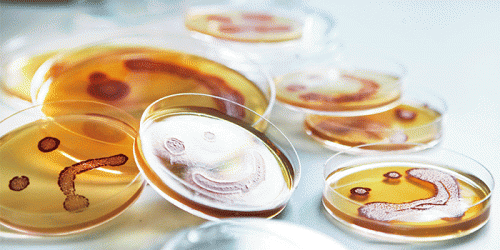The real disease burden of foodborne infections in Denmark

Campylobacter is the foodborne bacteria that contributes most to the burden of disease in Denmark. This is the finding of a study from the National Food Institute, Technical University of Denmark, which for the first time in Denmark ranks three foodborne bacteria according to the burden of disease they impose on society as a whole. The study provides authorities and other decision makers with the scientific basis to prioritize initiatives aimed at increasing food safety and reducing the health consequences of infection with one of the three bacteria.
Even in countries like Denmark which have sound health surveillance systems it is unknown exactly how many people get a foodborne infection. This is partly because Danes - just like people all over the world – do not necessarily go to the doctor when they get an upset stomach, and partly because laboratory tests do not always identify which bacteria is making people sick. Therefore diseases are not always recorded and subsequently included in official statistics. As such their true impact is underestimated.
Real burden of disease calculated
For the first time in Denmark researchers at the National Food Institute, together with colleagues from Statens Serum Institut, have calculated the real burden of disease from infections caused by salmonella, campylobacter and verotoxin-producing escherichia coli (VTEC). In their calculations the researchers corrected for underreporting and underdiagnosis, thereby putting a number on how many people actually get sick from the three bacteria.
The burden of disease is reported in DALYs, which stands for disability adjusted life years. DALYs are a measure of how many years of life the total Danish population loses when people have to live with a reduced quality of life and/or die earlier than expected due to disease – in this case foodborne infections.
"Our calculations provide the authorities with comparable and – as such – better measurements of the impact these diseases have on society. The results can support decisions about where to best intervene to ensure that as few people as possible become sick from the food they eat," senior researcher Sara Pires from the National Food Institute says.
Greatest burden of disease for campylobacter
The study is based on surveillance data from 2012. The calculations estimate that for every reported salmonella case, seven cases of disease were not reported. For campylobacter infections it is estimated that one out of 12 cases were reported, while the figures for VTEC infections is one out of 31 cases. This means that the actual number of sick in 2012 is estimated at 8,386 for salmonella, 44,736 for campylobacter and 5,890 for VTEC.
The total burden of disease was highest for campylobacter with 1,593 DALYs, followed by salmonella (389 DALYs) and VTEC (113 DALYs). For both campylobacter and salmonella infections the disease that contributed the most to the total burden of disease was irritable bowel syndrome, while for VTEC it was renal failure.
Largest campylobacter burden of disease from broilers
Using data from the source account for salmonella and campylobacter, the researchers estimated which sources contributed most to the total burden of disease for the two infections.
For campylobacter infections 38% of the total number of DALYs were associated with foreign travel, while the major source of the burden of disease in Denmark was broilers - either from direct consumption of chicken meat or from environmental contamination.
"There could be substantial benefits to our society in terms of fewer sick days and lower costs to our health system from focusing efforts on minimizing infection with campylobacter in broilers," Sara Pires explains.

















